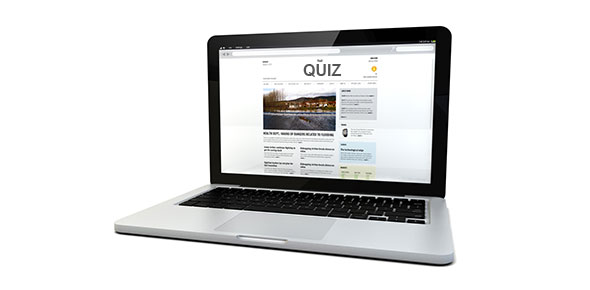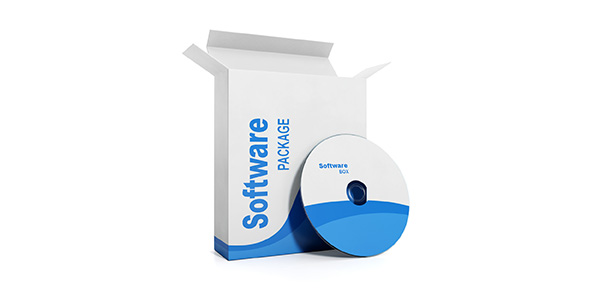Related Flashcards
Related Topics
Cards In This Set
| Front | Back |
|
Introduction
 What is a Network?Linking two or more computing devices together, usually for sharing data (files or folders) or resources (mail servers, file server, printers, Scanners etc.) is popularly known as a Network.If there are a number of computers at home or in an organization, connecting them together can bring substantial benefits. For example, you can share printers, internet connections and files such as photos or music etc.Networks are built using both computer hardware and software. Networks can be categorized into different types like LAN, WAN and MAN according to the geographic area they span.In this module, you will be learning about the various types of network cables, their connectors, the technologies available, their characteristics, IP addressing etc., apart from the working of a network.Before we start the module topics, let's see how much you already know about the basic computer networking concepts. What is a Network?Linking two or more computing devices together, usually for sharing data (files or folders) or resources (mail servers, file server, printers, Scanners etc.) is popularly known as a Network.If there are a number of computers at home or in an organization, connecting them together can bring substantial benefits. For example, you can share printers, internet connections and files such as photos or music etc.Networks are built using both computer hardware and software. Networks can be categorized into different types like LAN, WAN and MAN according to the geographic area they span.In this module, you will be learning about the various types of network cables, their connectors, the technologies available, their characteristics, IP addressing etc., apart from the working of a network.Before we start the module topics, let's see how much you already know about the basic computer networking concepts. |
CompTIA+ Networking Concepts - Introduction Card 1
|
|
Cable Types
 What is Network Cabling?Cable is the medium through which data is transmitted from one network device to another. There are several types of cables, which are commonly used with LANs. The growth of Local Area Networks (LANs) and client server computing has produced a great increase in the amount of cabling used.In many cases, a network will use a variety of cable types. The type of cable chosen for a network is related to the network's topology, protocol, and size. Also the common transmission losses such as attenuation have to be taken care of while choosing the type of cable used. What is Network Cabling?Cable is the medium through which data is transmitted from one network device to another. There are several types of cables, which are commonly used with LANs. The growth of Local Area Networks (LANs) and client server computing has produced a great increase in the amount of cabling used.In many cases, a network will use a variety of cable types. The type of cable chosen for a network is related to the network's topology, protocol, and size. Also the common transmission losses such as attenuation have to be taken care of while choosing the type of cable used. |
CompTIA+ Networking Concepts - Cable Types Card 2
|
|
Cable Types (Cont...)
 A cable is a group of insulated conductors enclosed within an Insulator. The main function of a cable is transmitting signal from one point to another. They can be broadly categorized into 5 types depending on their attenuation, cost, immunity to EMI, skilled labor required for installation etc.Given below is the list of cable types used in networking. A cable is a group of insulated conductors enclosed within an Insulator. The main function of a cable is transmitting signal from one point to another. They can be broadly categorized into 5 types depending on their attenuation, cost, immunity to EMI, skilled labor required for installation etc.Given below is the list of cable types used in networking.
|
CompTIA+ Networking Concepts - Cable Types (cont.) Card 3
|
|
Coaxial Cable
 What is a Coaxial Cable?Coaxial cable is commonly used in the cable television industry. This has also gained popularity in use for computer networks, such as Ethernet networks. Coaxial cable is highly resistant to signal interference and can support greater distance between network devices than twisted pair cable.Coaxial cable consists of a single core copper wire surrounded by an insulator and enclosed in a copper mesh, finally covered inside an outside insulation. What is a Coaxial Cable?Coaxial cable is commonly used in the cable television industry. This has also gained popularity in use for computer networks, such as Ethernet networks. Coaxial cable is highly resistant to signal interference and can support greater distance between network devices than twisted pair cable.Coaxial cable consists of a single core copper wire surrounded by an insulator and enclosed in a copper mesh, finally covered inside an outside insulation.
|
CompTIA+ Networking Concepts - Coaxial Card 4
|
|
Plenum/PVC
 What is Plenum Cable?Plenum grade cable is a cable that uses fire resistant material such as Teflon for insulation. This type of material in the insulation minimizes the amount of smoke in case of fire. However, plenum cabling are more expensive and less flexible than a PVC cable. This type of cable is generally used in space reserver for air circulation in air conditioning and heating systems. What is Plenum Cable?Plenum grade cable is a cable that uses fire resistant material such as Teflon for insulation. This type of material in the insulation minimizes the amount of smoke in case of fire. However, plenum cabling are more expensive and less flexible than a PVC cable. This type of cable is generally used in space reserver for air circulation in air conditioning and heating systems. |
CompTIA+ Networking Concepts - Plenum / PVC Card 5
|
|
Twisted Pairs
 The twisting of two insulated wires around each other is known as twisted pair cables. Cables that use twisted pair of wires reduce the Crosstalk between them to a great extent.As shown in the image, the pair of wires may be surrounded either by a shield, or similar pairs of wires. Each pair is uniquely color coded when packaged in multiple pairs. Different uses such as Analog, Digital, and Ethernet require different pair multiples.Twisted pair wiring is commonly used to connect telephones and in computer network technology and are classified according to their maximum transmission frequencies. Today, there are basically only two types used and they are Cat3 and Cat5.Some features of Twisted pair cabling are: The twisting of two insulated wires around each other is known as twisted pair cables. Cables that use twisted pair of wires reduce the Crosstalk between them to a great extent.As shown in the image, the pair of wires may be surrounded either by a shield, or similar pairs of wires. Each pair is uniquely color coded when packaged in multiple pairs. Different uses such as Analog, Digital, and Ethernet require different pair multiples.Twisted pair wiring is commonly used to connect telephones and in computer network technology and are classified according to their maximum transmission frequencies. Today, there are basically only two types used and they are Cat3 and Cat5.Some features of Twisted pair cabling are:
|
CompTIA+ Networking Concepts - Twisted Pairs Card 6
|
|
STP
 Shielded Twisted Pair (STP)In STP each of the two copper wires are twisted together and coated with a dielectric insulator which functions as ground for the wires. The extra shielding in STP wiring protects the transmission line from the leaking of electromagnetic interference from and into the cable. STP cabling is often used in Ethernet networks, especially fast data rate Ethernets with Speeds in the range of 10 to 1000 Mbps.The notable features of STP are: Shielded Twisted Pair (STP)In STP each of the two copper wires are twisted together and coated with a dielectric insulator which functions as ground for the wires. The extra shielding in STP wiring protects the transmission line from the leaking of electromagnetic interference from and into the cable. STP cabling is often used in Ethernet networks, especially fast data rate Ethernets with Speeds in the range of 10 to 1000 Mbps.The notable features of STP are:
|
CompTIA+ Networking Concepts - Shielded Twisted Pairs Card 7
|
|
UTP (Cat 3, Cat 5/e, Cat 6)
 Unshielded Twisted Pair (UTP)UTP using the 10BaseT specification is the most used type of twisted pair cable in Category 5 cabling. In this cable though each individual wire is not insulated, each wire is twisted around each other.The main disadvantage of UTP is that it is more susceptible to electrical noise and interference than other types of networking media, and the signal needs to be boosted at shorter distances than that of coaxial and fiber optic cables. The maximum cable length is 100 meters or 328 feet (10BaseT).Let us see the commonly used types of UTP cabling: Unshielded Twisted Pair (UTP)UTP using the 10BaseT specification is the most used type of twisted pair cable in Category 5 cabling. In this cable though each individual wire is not insulated, each wire is twisted around each other.The main disadvantage of UTP is that it is more susceptible to electrical noise and interference than other types of networking media, and the signal needs to be boosted at shorter distances than that of coaxial and fiber optic cables. The maximum cable length is 100 meters or 328 feet (10BaseT).Let us see the commonly used types of UTP cabling:
|
CompTIA+ Networking Concepts - UTP (Cat 3, Cat 5/e, Cat 6) Unshielded Twisted Pairs Card 8
|
|
Fiber (Single, Multi-mode)
 What is Fiber-Optic Cable?It is a cabling technology that uses optical fibers to carry digital data signals in the form of modulated pulses of light. The core of fiber-optic cable is made of glass or plastic and the cladding that are enclosed by a protective coating. Outer insulating jacket is made of Teflon or PVC. Kevlar fibers are used to strengthen the cable and prevent from breakages.A brief overview of the advantages of fiber-optic cable over coaxial and twisted pair: What is Fiber-Optic Cable?It is a cabling technology that uses optical fibers to carry digital data signals in the form of modulated pulses of light. The core of fiber-optic cable is made of glass or plastic and the cladding that are enclosed by a protective coating. Outer insulating jacket is made of Teflon or PVC. Kevlar fibers are used to strengthen the cable and prevent from breakages.A brief overview of the advantages of fiber-optic cable over coaxial and twisted pair:
|
CompTIA+ Networking Concepts - Fiber (Single, Multi mode) Card 9
|
|
Fiber (Single, Multi-mode) (Cont...)
 Single-mode Fiber Optic CablesThe Single-mode Fiber (SMF) is a single strand of glass fiber with core diameter less than 10 microns and has one mode of transmission. Single-mode Fiber Optic CablesThe Single-mode Fiber (SMF) is a single strand of glass fiber with core diameter less than 10 microns and has one mode of transmission.
|
CompTIA+ Networking Concepts - Fiber (Single, Multi mode) (cont.) Card 10
|
|
RS-232
 RS-232RS (Recommended Standard) - 232 is a standard for serial binary data interconnection. It is commonly used in computer serial ports. RS-232RS (Recommended Standard) - 232 is a standard for serial binary data interconnection. It is commonly used in computer serial ports.
|
CompTIA+ Networking Concepts - RS-232 Card 11
|
|
BNC
 The BNC (British Naval Connector) is a standardized connector used with Thinnet and coaxial cable. The BNC (British Naval Connector) is a standardized connector used with Thinnet and coaxial cable.
|
CompTIA+ Networking Concepts - BNC Card 12
|
|
RJ-45
 What does RJ-45 mean? What does RJ-45 mean?
|
CompTIA+ Networking Concepts - RJ-45 Card 13
|
|
AUI
 AUI (Attachment Unit Interface) AUI (Attachment Unit Interface)
|
CompTIA+ Networking Concepts - AUI Card 14
|
|
ST/SC
  ST and SC connectorsThere are many types of plugs and sockets available to connect optical fibers; the most common connector used with fiber optic cable are: ST and SC connectorsThere are many types of plugs and sockets available to connect optical fibers; the most common connector used with fiber optic cable are:
|
CompTIA+ Networking Concepts - ST / SC Card 15
|







